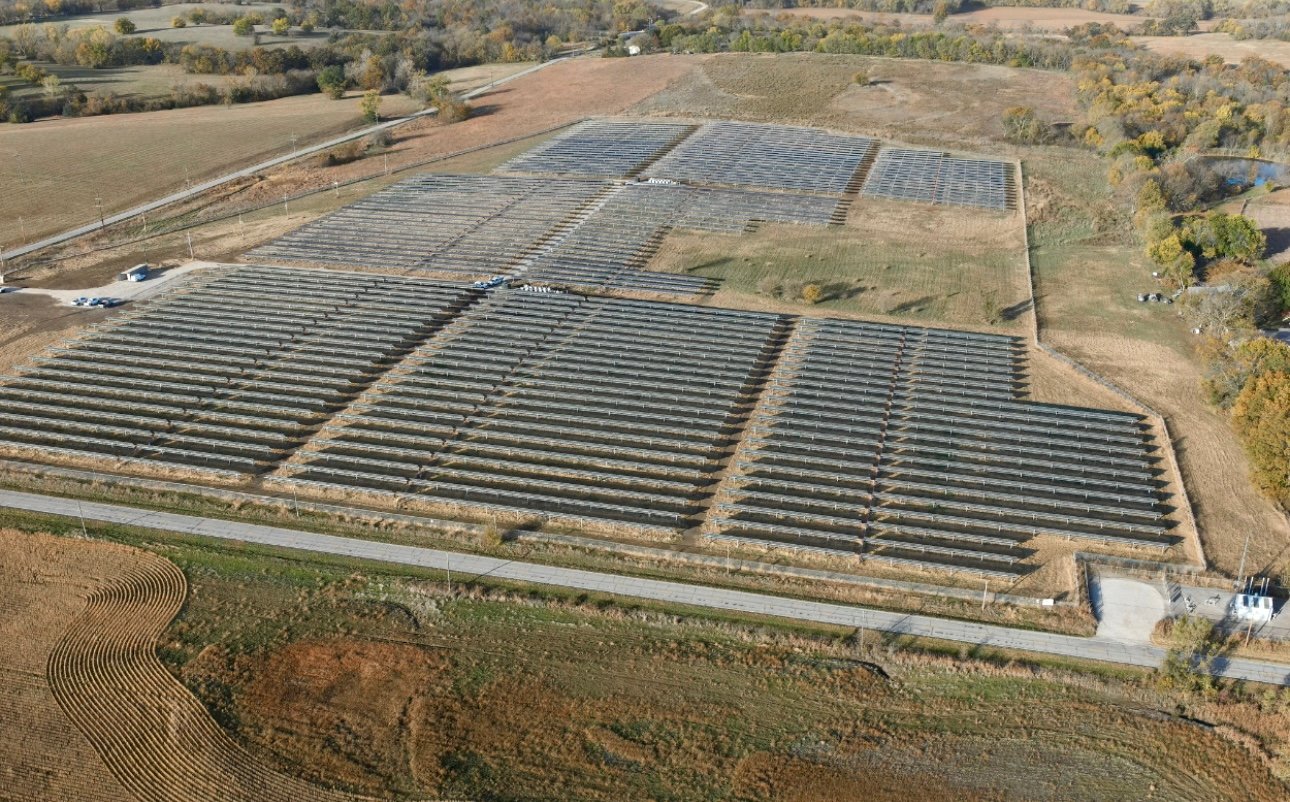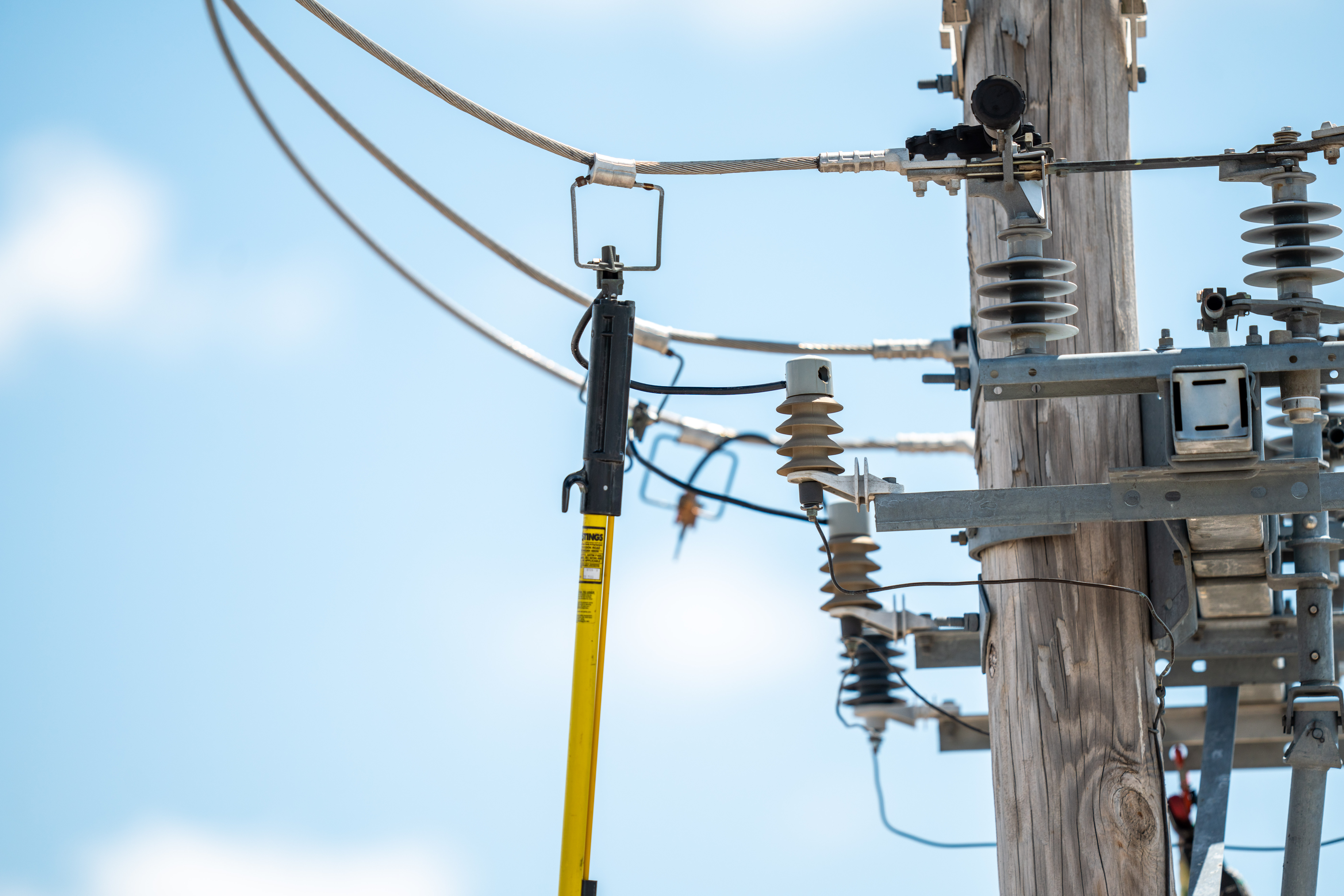Case Study: Osawatomie Solar Array
Evergy is committed to providing our customers with cost-effective, reliable renewable energy solutions to help build a more sustainable future....
3 min read
 Lindsay Freeman
:
Nov 4, 2021 1:15:00 PM
Lindsay Freeman
:
Nov 4, 2021 1:15:00 PM

Renewable energy is quickly becoming a more attractive investment due to lower carbon emissions, affordability, and compliance with changing regulations. According to Rystad Energy, capital outlay on renewables will reach a record $243 billion this year, edging closer towards expected oil and gas spending of around $311 billion.
There are three investment sectors in any energy supply chain—upstream, midstream, and downstream. The upstream sector consists of oil and gas extraction, production, and operations. The midstream sector is any entity that connects upstream and downstream investors, which includes transportation and storage services. The downstream sector engages in anything related to the post-production of crude oil and natural gas activities. Each sector will need to approach renewable investments differently in order to safeguard against market volatility and ensure profitability in the supply chain.
Renewables are becoming a more attractive investment with evolving emissions regulations, demand for green energy, and lower renewable technology costs. While the shift to renewable energy is inevitable, there are several barriers and risks to consider before investing.
Infrastructure may be the most significant barrier to implementing renewable energy on a large scale. Major infrastructure changes take time and can shift based on national and global priorities. The infrastructure changes required to shift from fossil fuels to renewable sources will take a long time. Because renewables technology is rapidly changing, it can be difficult to predict when and how long-term changes of infrastructure will take place.
National and global politics dictate energy policies. Depending on the priorities of the current administration, public policy can make it more or less difficult to change infrastructure. Changes in policy, administration, and infrastructure can swiftly disrupt the market, causing volatile fluctuations in pricing.
Renewable energy has slowly become more attractive to investors over the last several decades. If you haven’t diversified your energy portfolio with renewables, now is a great time to consider it as a result of technological advancements, lower pricing, consumer behavior and interest, and stricter regulations.
The renewable technology you invest in today needs to last long term in order to offer a strong return on investment. Wind turbines and solar panels, on average, are built to last approximately 30 to 40 years, and 85 percent of the turbine component materials can be recycled or reused. A standard hydropower facility can last up to 100 years. A global shift to renewable energy is inevitable. Diversifying your portfolio with renewables helps minimize reliance on fossil fuels and reduces carbon emissions for decades to come.
Renewable sources, such as wind and solar, are some of the most cost-effective energy solutions on the market today. However, as the demand for green energy increases, renewables will likely become more expensive. Adding renewables to your portfolio now allows you to capitalize on prices while existing tax incentives are keeping prices low. Renewable energy tax credits are scheduled to drop incrementally over the next several years. Evergy Energy Partners has safe-harbored solar equipment 30 percent tax credits until 2025. We also have the capital to lock in pricing at the start of a renewable project to avoid price fluctuation.
Investors must have a diversified energy portfolio to mitigate the risks of intermittency and price volatility. As you add renewables to your portfolio, it doesn’t make sense to put all of your eggs in one basket. Diversification of fuels, technologies, renewables, contract term, and financial instruments offers a smoother transition when adding renewable energy sources. Keep in mind that interest rates will likely increase in the future, so investing in renewables now secures access and pricing at low interest rates.
Renewable portfolio standards (RPS) can be voluntary or mandatory and vary from state to state. Even if they are optional now, some voluntary regulations could become mandatory in the future. As regulations shift in favor of renewable energy, growing demand will impact pricing in the market. It’s recommended to align your investments with regulations, even voluntary ones, to safeguard your portfolio against stricter regulations in the future.
What can investors anticipate from renewables moving forward? There are endless possibilities for the path forward, but one thing is certain: all paths point toward less carbon. Technology is continuing to ramp up in support of more efficient and abundant renewable sources, including hydrogen, battery storage, and more.
Companies who diversify with renewables early will likely weather this transition more smoothly and with lower risk of price volatility and intermittency. We will likely see the upstream sector investing in more renewable generation and adjusting to lower-carbon solutions for non-renewable sources. Midstream sectors will also need to meet the growing demand for green energy by investing in battery storage and low-carbon transportation. Downstream investors will need to meet the growing consumer demand for reliable, cost-effective, and diversified energy sources with a combination of renewable and non-renewable sources.
Evergy Energy Partners is committed to providing our customers with cost-effective renewable energy solutions to help build a more sustainable future.

Evergy is committed to providing our customers with cost-effective, reliable renewable energy solutions to help build a more sustainable future....

People's Electric Cooperative (PEC), an electric cooperative serving rural areas in south-central Oklahoma, joined forces with Evergy Energy Partners...

The energy landscape of the United States is rapidly changing, driven by a focus on clean energy and the need for a more flexible and resilient grid....